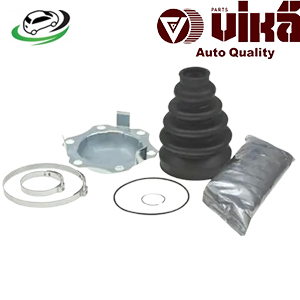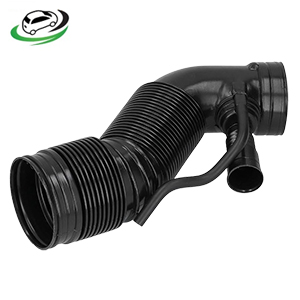Get Air Intake Hose Connect Pipe Volkswagen Golf 1999-2000 / Jetta 2000 1J0129684 N
The air intake hose connect pipe is a vital component of a vehicle’s air intake system. It ensures the smooth flow of air from the air filter to the engine, facilitating efficient combustion and optimal engine performance. This guide provides an in-depth look at the purpose, design, common issues, and maintenance of the air intake hose connect pipe.
1. Purpose and Function of the Air Intake Hose Connect Pipe
The air intake hose connect pipe, also known as the intake pipe or air intake duct, serves as a conduit for delivering air to the engine’s intake manifold. Its primary functions include:
1.1. Facilitating Air Flow
- Air Delivery: The connect pipe connects the air filter to the engine’s intake manifold, allowing filtered air to enter the engine. This air is crucial for the combustion process, as it mixes with fuel to produce power.
- Consistent Air Supply: It ensures a consistent and uninterrupted flow of air to the engine. This is essential for maintaining optimal engine performance and efficiency.
1.2. Supporting Engine Performance
- Combustion Efficiency: By delivering clean, filtered air to the engine, the intake pipe helps maintain efficient combustion. Proper air-fuel mixture is crucial for maximizing engine power and fuel efficiency.
- Engine Protection: The pipe helps prevent unfiltered air and contaminants from entering the engine, which could potentially cause damage or reduce engine lifespan.
1.3. Noise Reduction
- Sound Dampening: In some designs, the air intake hose connect pipe incorporates features to reduce intake noise. This can contribute to a quieter engine operation and a more pleasant driving experience.
2. Design and Structure of the Air Intake Hose Connect Pipe
The air intake hose connect pipe is designed to withstand the conditions of the engine bay and ensure proper air flow. Its design includes several key components:
2.1. Components
- Hose or Pipe: The primary component is the hose or pipe itself, which can be made from various materials, including rubber, plastic, or metal. The material used depends on factors such as temperature resistance, durability, and cost.
- Connectors: The pipe typically features connectors or flanges at both ends to attach securely to the air filter and intake manifold. These connectors ensure a tight seal and prevent air leaks.
- Clamps: Hose clamps or brackets are often used to secure the pipe in place and prevent it from disconnecting or moving during operation.
2.2. Material Considerations
- Rubber: Rubber hoses are flexible and can accommodate slight movements and vibrations. They are often used in applications where flexibility is required.
- Plastic: Plastic pipes are lightweight and resistant to corrosion. They are commonly used in modern vehicles for their durability and cost-effectiveness.
- Metal: Metal pipes, such as aluminum or stainless steel, are used for their strength and heat resistance. They are typically found in performance or high-temperature applications.
2.3. Mounting and Installation
- Mounting Points: The air intake hose connect pipe is mounted using connectors, clamps, or brackets. Proper alignment and secure mounting are essential to prevent air leaks and ensure efficient air flow.
- Installation: Installing the pipe involves connecting it to the air filter and intake manifold, securing it with clamps or brackets, and ensuring that all connections are tight and free from leaks.
3. Common Issues with Air Intake Hose Connect Pipes
Over time, the air intake hose connect pipe can experience various issues that may affect its performance and the engine’s operation. Common problems include:
3.1. Wear and Damage
- Cracking and Splitting: Rubber and plastic hoses can develop cracks or splits due to exposure to heat, vibrations, and engine chemicals. This can lead to air leaks and reduced engine performance.
- Physical Damage: The pipe can become damaged from impacts or debris, affecting its ability to deliver air efficiently and potentially causing leaks.
3.2. Air Leaks
- Improper Sealing: If the connectors or clamps are not properly secured, air leaks can occur. Leaks in the intake system can lead to reduced engine performance, poor fuel efficiency, and increased emissions.
- Worn Seals: The seals at the connectors can wear out over time, leading to air leaks and potential issues with the engine’s air-fuel mixture.
3.3. Clogged or Blocked Pipes
- Debris Accumulation: The intake pipe can become clogged with debris or contaminants, restricting air flow and affecting engine performance. Regular inspections and cleaning can help prevent this issue.
4. Maintenance and Replacement
Proper maintenance and timely replacement of the air intake hose connect pipe are essential for ensuring optimal engine performance and efficiency.
4.1. Inspection
- Visual Check: Regularly inspect the intake pipe for signs of wear, damage, or leaks. Look for cracks, splits, or other visible damage on the hose or pipe.
- Connection Points: Check the connectors, clamps, and seals for proper alignment and tightness. Ensure that there are no signs of air leaks or loose connections.
4.2. Cleaning
- Debris Removal: If the pipe becomes clogged or blocked, clean it to remove any debris or contaminants. Use a soft brush or compressed air to gently clean the interior of the pipe.
- Inspecting Filters: Ensure that the air filter is clean and free from debris. A clogged air filter can contribute to issues with the intake pipe and affect overall engine performance.
4.3. Replacement Procedure
- Removing the Old Pipe: To replace a faulty intake pipe, first, ensure the engine is cool and the vehicle is safely supported. Disconnect the battery and remove any components that obstruct access to the intake pipe. Disconnect the pipe from the air filter and intake manifold, and remove any clamps or brackets.
- Installing the New Pipe: Install the new intake pipe by aligning it with the connectors and securing it with clamps or brackets. Ensure that all connections are tight and free from leaks. Reinstall any removed components and reconnect the battery.
- Testing: After installation, start the engine and check for any signs of air leaks or performance issues. Ensure that the intake pipe is properly sealed and functioning correctly.
4.4. Professional Service
- Consult a Mechanic: If you encounter difficulties with the intake pipe or if the issue persists after replacement, it is advisable to consult a professional mechanic. They can perform a thorough inspection, diagnose any issues, and ensure that the intake system is properly installed and functioning.
5. The Role of the Air Intake Hose Connect Pipe in Vehicle Performance
The air intake hose connect pipe plays a crucial role in maintaining the performance and efficiency of the vehicle’s engine by:
5.1. Ensuring Efficient Air Flow
- Optimal Combustion: By delivering a consistent and clean supply of air to the engine, the intake pipe helps maintain efficient combustion, maximizing engine power and fuel efficiency.
5.2. Enhancing Engine Performance
- Smooth Operation: A properly functioning intake pipe ensures smooth engine operation and responsiveness. It helps prevent issues such as rough idling, hesitation, or reduced acceleration.
5.3. Preventing Engine Damage
- Protecting Components: The intake pipe helps prevent unfiltered air and contaminants from entering the engine, protecting internal components and extending engine life.
6. Advances in Air Intake Hose Connect Pipe Technology
Modern vehicles may incorporate advanced technologies and materials to enhance the performance and durability of the air intake hose connect pipe:
6.1. Enhanced Materials
- High-Temperature Resistant Materials: Newer intake pipes use materials with improved heat resistance to withstand the high temperatures in the engine bay and maintain performance over time.
- Durable Composites: Advanced composites and high-strength plastics are used to improve the durability and resistance to wear and damage.
6.2. Improved Design
- Aerodynamic Shapes: Some intake pipes are designed with aerodynamic shapes to reduce air resistance and improve air flow efficiency. This can contribute to better engine performance and fuel economy.
- Integrated Features: Modern intake pipes may include integrated features such as noise-reducing elements or temperature sensors to enhance overall performance and comfort.
6.3. Precision Manufacturing
- Advanced Manufacturing Techniques: Modern manufacturing techniques ensure that intake pipes are produced with greater precision and consistency, resulting in improved fit, performance, and durability.
Follow us on Facebook for more parts.



